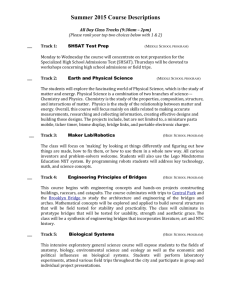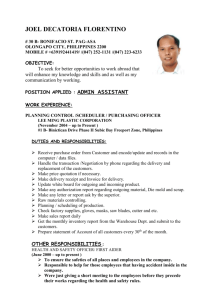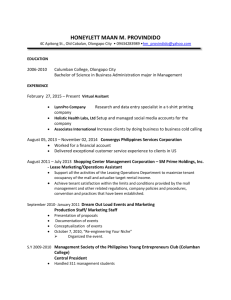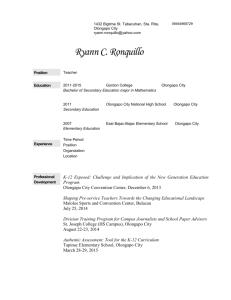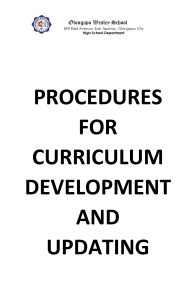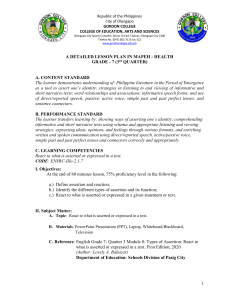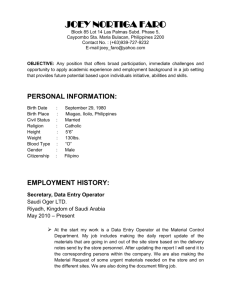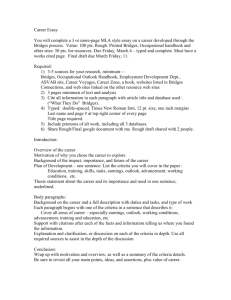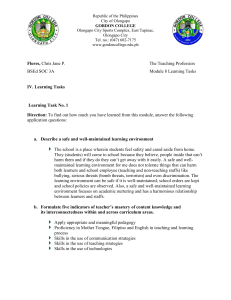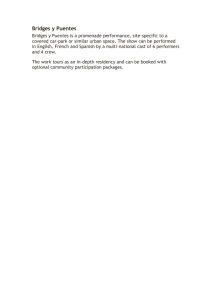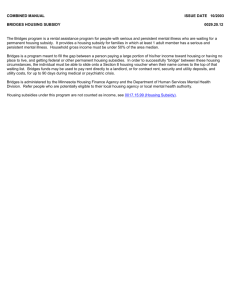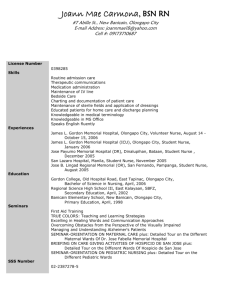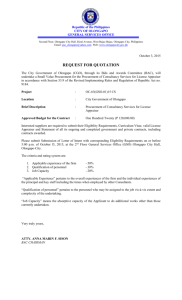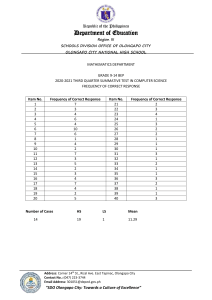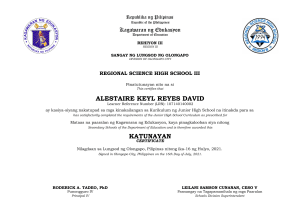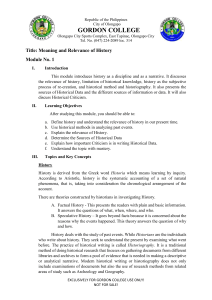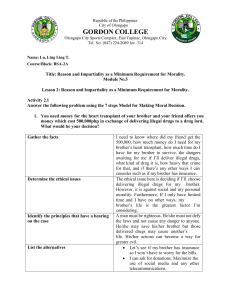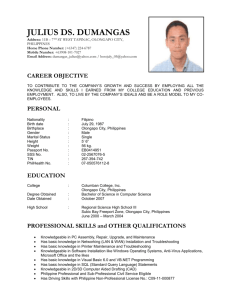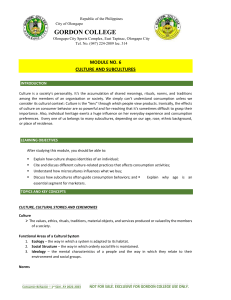Project Factsheet - Asia
advertisement
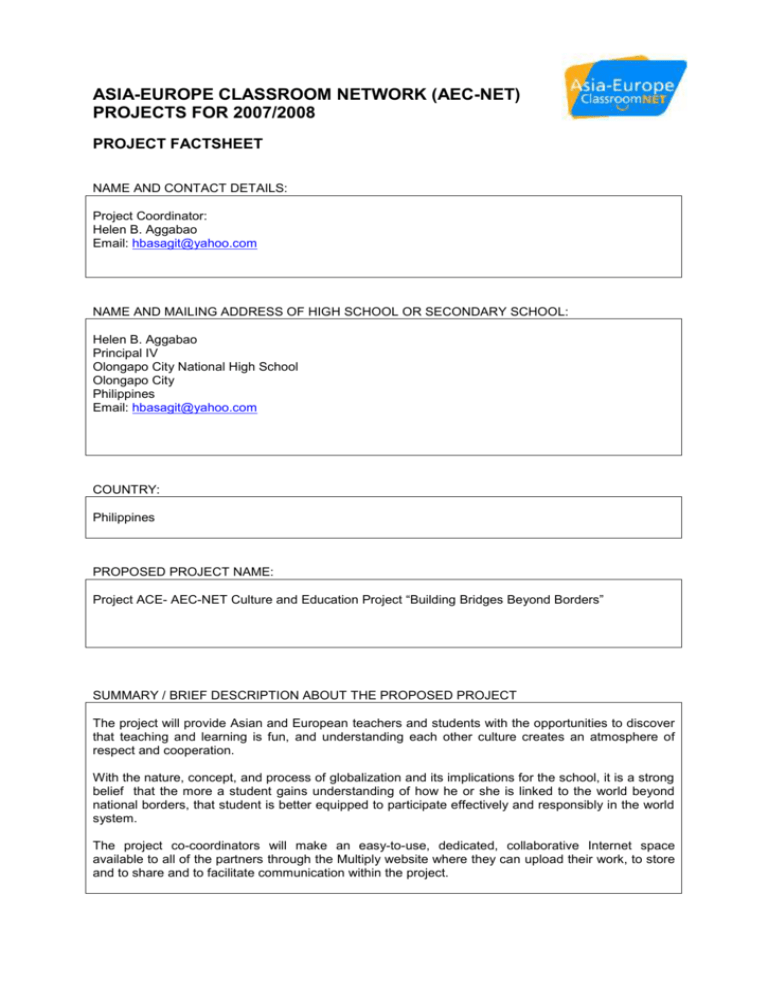
ASIA-EUROPE CLASSROOM NETWORK (AEC-NET) PROJECTS FOR 2007/2008 PROJECT FACTSHEET NAME AND CONTACT DETAILS: Project Coordinator: Helen B. Aggabao Email: hbasagit@yahoo.com NAME AND MAILING ADDRESS OF HIGH SCHOOL OR SECONDARY SCHOOL: Helen B. Aggabao Principal IV Olongapo City National High School Olongapo City Philippines Email: hbasagit@yahoo.com COUNTRY: Philippines PROPOSED PROJECT NAME: Project ACE- AEC-NET Culture and Education Project “Building Bridges Beyond Borders” SUMMARY / BRIEF DESCRIPTION ABOUT THE PROPOSED PROJECT The project will provide Asian and European teachers and students with the opportunities to discover that teaching and learning is fun, and understanding each other culture creates an atmosphere of respect and cooperation. With the nature, concept, and process of globalization and its implications for the school, it is a strong belief that the more a student gains understanding of how he or she is linked to the world beyond national borders, that student is better equipped to participate effectively and responsibly in the world system. The project co-coordinators will make an easy-to-use, dedicated, collaborative Internet space available to all of the partners through the Multiply website where they can upload their work, to store and to share and to facilitate communication within the project. RATIONALE FOR THE PROJECT: The basic objective of globalization is to enhance productivity and to make the educational system an instrument of preparing students, who can compete in the world market as productive members of the society. This would necessitate making skills training as an integral part of the curriculum besides making attitudinal changes so that the students do not consider it infra-dig to work with hands. It is an effective instrument of creating international linkage due to its multidimensional impact on the system of education. International educational linkages can help institutions enrich the curriculum. Establishing an international linkage involves identifying basic considerations (benefits and obligations), examining arrangement options, selecting a partner, making a formal agreement, and nurturing and maintaining the partnership. Creating effective opportunities for international programs is a shared responsibility between the institution and the faculty within it. The school administrator role in creating an environment for the purpose of enhancing global programs and proactively seek internationalization opportunities within a campus is very important . It is one way of engaging the faculty in venturing out of the traditional teaching and research roles and encourage them to effectively participate in the campus internationalization efforts and overcome departmental, disciplinary, infrastructure, and traditional role boundaries. When we talk about international work, we often talk about building bridges. Bridges are by definition structures designed and built by some so that others can pass through, hence the altruistic nature of international work. Here lies one of the challenges of initiating international programs in academic environments. It is one way of integrating resources for a greater common good. The most effective international linkages, regardless of their size, scope, goals, and context begin with people who put the common good before their own and cut across barriers to pull together whatever it takes to form that bridge. It is in this context that Olongapo City National High School has started to build bridges in the global community through this project and hopes to create an environment which aims to transcend its perspective to a new dimension and linkage with educational institutions outside the Philippines . EXPECTED CONTRIBUTION FROM EUROPEAN-ASIAN SCHOOLS/STUDENTS: Phase 1: Personal Profiles with photograph uploaded to Moodle (January 2008) Phase 2: Exchange of information on academics and cultural activities through school visits and via internet Phase 3 Dissemination of the project - this will be done locally by each school and in the form of a project website by the coordinating countryEvaluation from all the Participants (September, 2008 MINIMUM NUMBER OF SCHOOLS/STUDENTS INVOLVED: Flexible PROPOSED DURATION OF PROJECT (PLEASE STATE TENTATIVE START AND END DATE): 9 months (January - September 2008) ICT TOOLS / SOFTWARE REQUIRED: ADDITIONAL RESOURCES NEEDED: Internet access None Possibly also: Digital cameras – photo editing software Digital video cameras – video editing software Optional: Video phones or PCs with NetMeeting or other video conferencing software)

